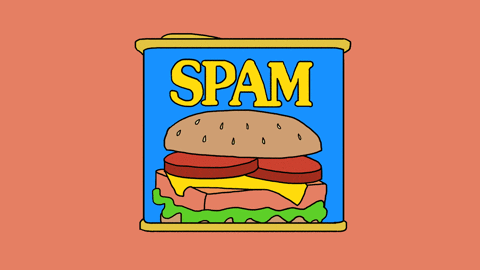
Nurturing people through email is a key factor of inbound marketing but not every email database is perfect, so verifying the validity of your databases and keeping them up to date is vital. Here’s why.
So you have a fantastic product or service and you want to get the message out to as many people as possible. You’ve heard about how inbound marketers successfully use email marketing (among other things) to nurture people along their buyer’s journey, and you want to give it a try. Now all you have to do is find a list of people to send emails to… but building a database can be a long and tedious journey, so to shortcut this you go out and buy a database. It seems like a good idea at the time, but odds are that database hasn’t been properly verified and using it as is could be dangerous for your business.
There are many reasons why you need to be cautious when buying a database – for one, it’s the equivalent of digitally cold-calling or spamming people. Another is the Protection of Personal Information Act, most commonly known as POPI. This new Act coming into play ensures the protection of personal information to prevent intrusive marketing. Buying a database could put you in direct violation of this Act as sending people who didn’t opt-in to get info from you in an email, is misuse of their personal information
While POPI is a legal concern for everyone (and one that shouldn’t be ignored), there are other important factors to consider when buying a database and not verifying it: like your company’s reputation and attracting warm leads.
The importance of deliverability
Email deliverability in a nutshell is the measure of how many mailboxes your mail actually landed in – how successful you were as a sender. Using a marketing automation tool like MailChimp or HubSpot, you’ll be able to see the deliverability of your database, which is recommended when sending bulk emails.
But, if you used an unverified bought database to get a message out, does a couple of undelivered emails really matter?
Yes!
“In the email world, past performance does influence future results.” – HubSpot
What we find a lot of people don’t realise is that when your mail has a high bounce rate (high rate of non-delivered emails) your email domain could be marked as spam. This means that eventually your emails will start going directly to recipient’s spam folder… and once you’re in the spam folder, it’s hard to get out.

Let us put this in perspective for you:
If you’re sending these emails from your company email domain you@companyname.co.za and you get marked as spam, then all emails sent by anyone with the @companyname.co.za will be marked as spam no matter who they sent to… even your customers.
But I bought the databases, so it must be good… right?
Nope! Just because you paid for a database, doesn’t guarantee it’s 100% clean. There are just too many factors involved, like the age of the database and the source it came from.
All databases (even your own opt-in ones) are also dynamic:
- people change jobs
- company domains might change
- new firewalls may be in place
Plus, you run the risk of getting generic info@companyname.com email addresses, which means your mail is landing in a general inbox and will mostly likely never be seen by anyone who you’d consider a lead.
You also don’t know how old the bought database is, which is why it’s vital to check the database before you send emails to those addresses.
How can you ensure deliverability?
The quick answer… check all bought databases and keep your current ones clean.
When we onboard new clients they almost always have an existing database. It’s important to not just add this database to your marketing automation tool for all the reasons we have discussed. Rather use this list to get people to opt in to communication with you – but only after you have put the list through a verification tool
In this case we use a tool called BriteVerify to check all databases that any of our clients ask us to add. You simply upload your database and it tells you which emails are valid and which are risky.
But it’s also important to look at your opt-in databases too. We always recommend removing any emails that have hard bounced or soft bounced more than once from your database as soon as it happens. This will keep your opt-in databases clean.
Some facts to consider:
While a 0% bounce rate is possible, it’s important to remember that an email bounce rate of 3% is considered acceptable. It happens… but too much higher than that and you’re starting to put your company at risk. And if you’ve bought that database, you’re practically throwing money away because you won’t be attracting leads, you’ll be chasing them away.

Here are some scary stats from databases we’ve checked:
Previously purchased database from customer: 16% valid
Client’s current customer list: 64% valid
List from business cards: 36% valid
This means that in the best case scenario, had we sent out emails to the current customer list, 36% of the contacts would have bounced! More than enough to get you marked as spam.
First prize when it comes to contact databases is to get people to opt-in to communications organically. As a HubSpot Partner, we fully understand the implications of uploading databases to the tool (which is not HubSpot best practice), so we have a process that allows us to get people to opt-in to communications with us.
After we clean the database, we use another email automation tool, like MailChimp, to send one email to everyone in the database. This email either encourages them to subscribe to the client’s blog or download a useful resource. Those who take the journey and click through and fill in a form, are added to a contact list organically. Now any further communications we send them is because we know they want it.
Don’t forget the infamous unsubscribe
Whether you bought a database or not, you need to make sure that any emails you send have an option to unsubscribe. It’s important because if someone who didn’t sign up to get info from you (and even those who did), wants to stop getting said info, they must have a way to let you know.
“If you’re going to be rejected by email, the unsubscribe is by far the best way for it to go down.” – Hubspot
The real problem comes in when people are unable to click on the unsubscribe button or they do and it doesn’t work. You see, all email programmes now have the option to mark an email as spam and, if several different recipients mark you as spam, you’ll start automatically going into recipients’ spam folders… all the time.
- Delivering robust radio Audience Measurement for South Africa - 3rd April 2024
- The BRC hosts Ian Garland, modeller of the RAMS R&F data - 6th March 2024
- Facebook harnesses AR, VR for new era of connectedness - 21st June 2018





